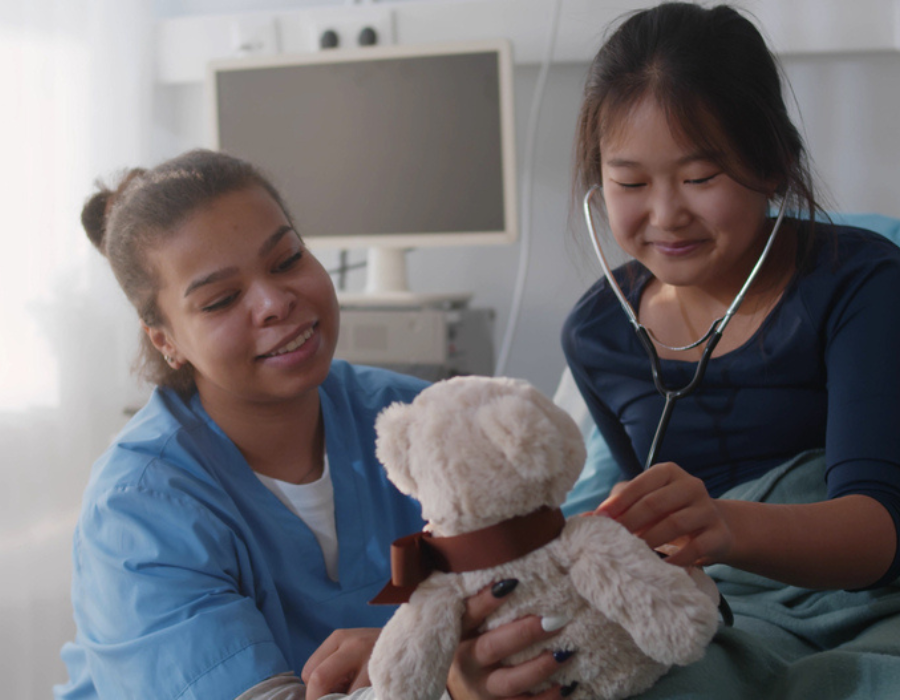Hospitals with Medical Device Advancements
Medical devices are currently the most important innovation. Hospitals and healthcare professionals utilize technological advances, such as novel uses for medical devices, to improve patient care. Researchers and scientists in the medical field are also utilizing non-medical technologies to facilitate and enhance the process.
Medical technology advancement is a game-changer for hospitals and healthcare professionals.
Diagnosis at an Early Stage
Numerous innovative medical device technologies aid in the early detection of numerous severe diseases. With an early diagnosis, medicine can prevent the disease's progression and facilitate the patient's rehabilitation.
Utilizing advances in genetics, numerous sophisticated diagnostic tests have been developed in recent years, such as genomic testing devices. Using such genomic testing devices, healthcare professionals are able to predict a patient's susceptibility to certain genetic and chronic diseases.
Other advancements include medical imaging devices, such as MRIs in hospitals, which enable medical professionals to detect abnormalities in a patient's body before symptoms manifest. Recent advances in MRI provide medical professionals with clear and detailed images of the patient's body, thereby enhancing their understanding of the causes. The current advancements in artificial intelligence will increase the precision of these devices.
Advanced Patient Monitoring Technologies
Consistent patient monitoring in the hospital is vitally important; consequently, patient monitoring devices are hospital necessities. These devices provide medical professionals with information about a patient's health conditions, enabling them to make decisions in an emergency. They provide nurses and doctors with the information required to make the best decisions possible, particularly in an emergency. As there may be a large number of hospitalized patients, these will facilitate the monitoring of those patients.
Smart patient monitoring systems utilizing network sensors and 5G or Wi-Fi to provide healthcare professionals with real-time updates on vital information, such as heart rate, blood pressure, and temperature, among others. This data is accessible from any location, which reduces the amount of manual labor required daily. Future advancements in these devices may allow for improved monitoring of a patient's body conditions, resulting in fewer hospital readmissions.
Accessible Doctor Visits
The development of telemedicine enables healthcare professionals to use telecommunications and medical devices to prescribe medications, provide health advice, and diagnose patients who are unable to see a doctor in person.
Telemedical devices help healthcare professionals reach and treat patients remotely. This can be used to provide remote patients with necessary follow-up care when a health care service center is located far away. Also, in poor communities where long-distance travel requires out-of-pocket expenses, there are travel difficulties due to weather and a lack of transportation infrastructure.
Patients were able to receive follow-up care remotely via telemedicine, thereby avoiding time-consuming travel. It has been successful in keeping patients in contact with their physicians. In one instance, the ability to view follow-up remotely reduced costs and time by fifty percent.
Remote Surgery
The surgical equivalent of telemedicine is telesurgery. Using telecommunications technology and surgical robots, medical specialists perform operations, allowing patients to receive specialized care without the need to travel.
Despite the fact that the technology has existed since the early 1920s, slow wireless speeds hinder its development. 4G was a major technological advancement, but it did not provide sufficient speeds for telesurgery. Surgeons were alarmed by the time lag between human action and robot results.
One of the most common reasons why medical devices are not accepted is the possibility of medical complications. With telesurgery, the delay between action and result and the possibility that a surgeon won't be able to react quickly is delaying the widespread adoption of the technology.
But, New developments in surgical robotics and wireless technology, such as 5G, which offers speeds 100 times faster than before, have made telesurgery more precise and realistic. In recent years, telemedicine has allowed doctors in a number of nations to perform surgery on patients located miles away from the hospital.
Treatment for rare diseases
Medical advancements are a game-changer and are saving more lives. Doctors treat irregularly beating hearts with a small device that uses electrical currents to keep the heart in rhythm.
As a result of advancements in medical technology, modern pacemakers are now smaller, simpler to the implant, and more durable, resulting in improved health outcomes and a reduced risk of complications.
Digital PCR platforms, which measure the amount of DNA in a sample and detect the presence of RNA, are yet another medical device. Using the most advanced medical technology, screening for rare genetic mutations and testing for mutated DNA in a patient's blood - a potential indicator of cancer - can be performed. The technology can aid in the identification of rare diseases.
Technological advances in medical devices aiding hospitals
Recent advances in medical technology have enhanced the effectiveness, precision, and affordability of medical treatment. Experts and researchers in the medical field are enhancing the efficacy of new technologies by incorporating artificial intelligence. Medical professionals will be able to obtain real-time information and updates on patients through wireless communications with increased bandwidth.
Click here to view, Medical Devices Markets Research Reports
